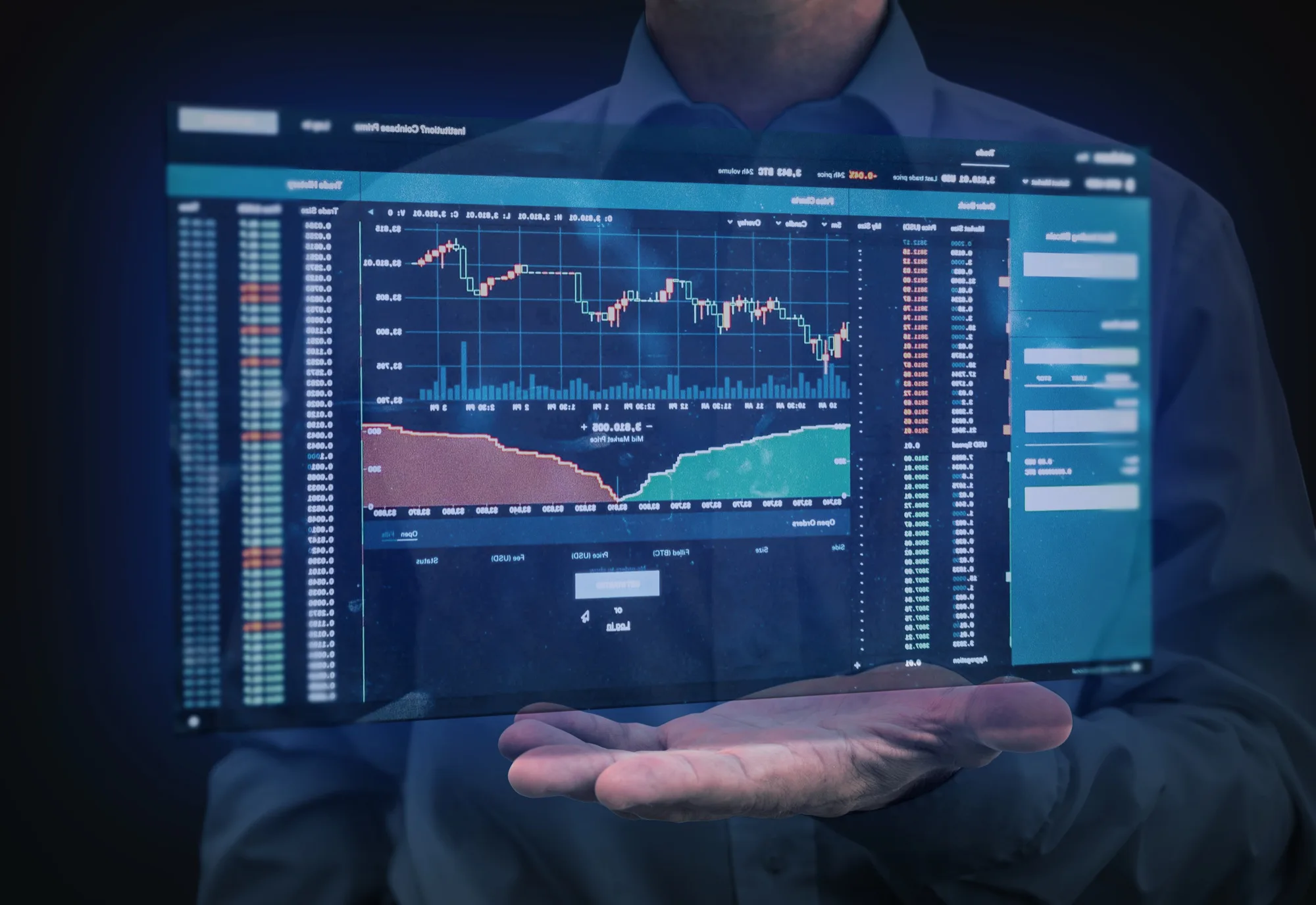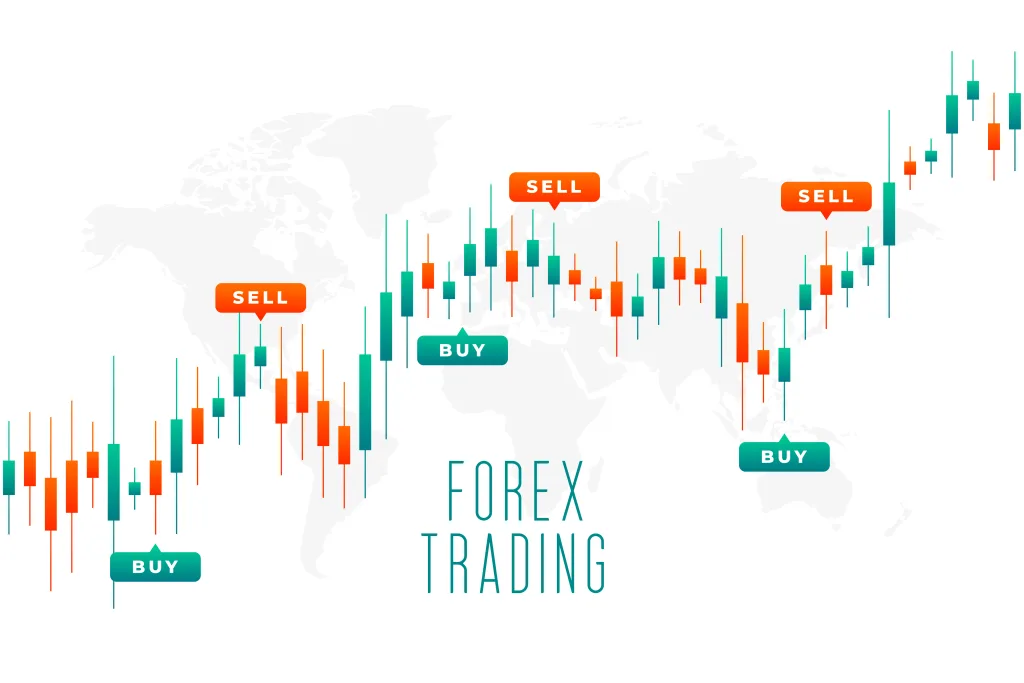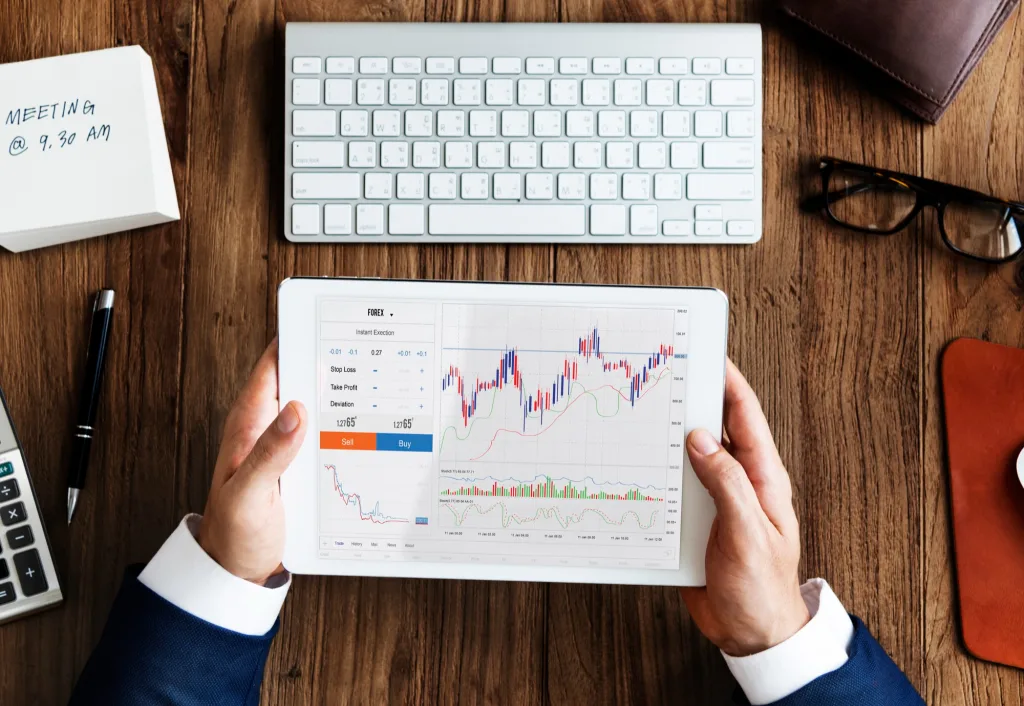How to Be a Professional Forex Trader: 7 Steps to Success

How to Be a Professional Forex Trader: Foreign Exchange (Forex) trading has transcended its status as a niche financial market to become a colossal global enterprise. Today, with a staggering daily trading volume surpassing $6 trillion, Forex trading presents exceptional opportunities for profit but also entails substantial risks. To become a professional forex trader, it is essential to go beyond a superficial understanding of the market. Achieving professional status demands a holistic approach, incorporating deep education, strategic planning, meticulous risk management, and robust emotional discipline. This detailed guide will walk you through the crucial steps and principles necessary to attain professionalism in forex trading. You may also want to read: How To Start Making Money On Online.

1. Understanding the Forex Market
1.1 What is Forex Trading?
Forex trading involves the buying and selling of currencies with the goal of profiting from fluctuations in exchange rates. Unlike stock markets, which are centralized exchanges, forex trading occurs over-the-counter (OTC). This decentralized nature means that forex trading is facilitated through a global network of banks, brokers, and dealers. The market operates 24 hours a day, five days a week, and involves the exchange of currency pairs. For example, trading the EUR/USD currency pair involves buying or selling the euro against the US dollar.
1.2 Key Players in Forex
To grasp the forex market fully, it’s important to understand the major players involved:
- Central Banks: Central banks, such as the Federal Reserve in the US or the European Central Bank (ECB), influence currency values through monetary policies and interest rate decisions. Their actions can significantly impact exchange rates and market trends.
- Banks: Banks play a dual role in forex trading. They facilitate transactions for their clients, including corporations and individuals, and engage in trading activities themselves. Major banks often participate in forex trading to manage risk or profit from market movements.
- Brokers: Forex brokers provide platforms and services for retail traders. They offer access to the forex market, facilitate trading transactions, and may offer leverage. Brokers can be either market makers, who set their own prices, or ECNs (Electronic Communication Networks), which provide direct access to the interbank market.
- Hedge Funds and Institutional Investors: These entities engage in large-scale forex trading to hedge against risks or speculate on market movements. Their trading volumes are significant and can influence currency prices.
1.3 Major Currency Pairs
Forex trading involves various currency pairs, which are classified into three main groups:
- Major Pairs: These pairs involve the most widely traded currencies and include the US dollar. Examples include EUR/USD (euro/US dollar), USD/JPY (US dollar/Japanese yen), and GBP/USD (British pound/US dollar). Major pairs typically have the highest liquidity and the lowest spreads.
- Minor Pairs: Minor pairs do not include the US dollar but involve other major currencies. Examples include EUR/GBP (euro/British pound) and AUD/JPY (Australian dollar/Japanese yen). These pairs may have wider spreads and less liquidity compared to major pairs.
- Exotic Pairs: Exotic pairs consist of one major currency and one currency from an emerging market. Examples include USD/TRY (US dollar/Turkish lira) and EUR/ZAR (euro/South African rand). Exotic pairs can be more volatile and have higher spreads.

2. Acquiring Forex Education
2.1 Fundamental Analysis
Fundamental analysis involves assessing economic, financial, and geopolitical factors that influence currency values. Key aspects of fundamental analysis include:
- Interest Rates: Central banks set interest rates, which affect currency values. Higher interest rates generally attract foreign investment, increasing demand for a currency and potentially raising its value.
- Economic Reports: Economic indicators such as Gross Domestic Product (GDP), employment figures, and inflation rates provide insights into a country’s economic health and can impact currency strength. For example, a strong GDP growth report may boost investor confidence and strengthen the currency.
- Political Stability: Political events and policies can have significant effects on currency values. Political instability or changes in government policies can create uncertainty and impact investor sentiment, affecting exchange rates.
2.2 Technical Analysis
Technical analysis involves using historical price data and charts to predict future price movements. Key components of technical analysis include:
- Charts: Various types of charts are used in technical analysis, including line charts, bar charts, and candlestick charts. Each type provides a different perspective on price movements and trends.
- Indicators: Technical indicators help traders analyze price data and identify trends. Common indicators include moving averages, Relative Strength Index (RSI), Moving Average Convergence Divergence (MACD), and Bollinger Bands. These tools can help traders make informed decisions based on historical patterns.
- Chart Patterns: Chart patterns such as Head and Shoulders, Double Top/Bottom, and trendlines can signal potential market reversals or continuations. Recognizing these patterns helps traders anticipate future price movements and make strategic trading decisions.
2.3 Trading Strategies
Developing a robust trading strategy is crucial for success in forex trading. Here are some popular trading strategies:
- Trend Following: This strategy involves identifying and trading in the direction of the prevailing trend. Traders look for confirmation signals and enter positions that align with the established trend, aiming to capture long-term price movements.
- Range Trading: Range trading focuses on buying at support levels and selling at resistance levels within a defined range. Traders use technical analysis to identify these levels and make trades based on the assumption that prices will bounce between them.
- Breakout Trading: Breakout trading involves entering positions when the price breaks out of a predefined range or chart pattern. Traders anticipate that the price will continue to move in the direction of the breakout, and they position themselves to capitalize on the momentum.

3. Developing a Trading Plan
3.1 Setting Goals
Establishing clear and achievable goals is essential for a successful trading career. Consider the following:
- Profit Targets: Set realistic profit goals based on your trading style and risk tolerance. Define short-term and long-term targets to measure your progress and success.
- Risk Management: Determine how much you are willing to risk per trade and per day. Establishing risk management rules helps protect your capital and prevent excessive losses.
3.2 Choosing a Trading Style
Select a trading style that aligns with your personality, schedule, and risk tolerance. Common trading styles include:
- Day Trading: Day traders open and close positions within the same trading day, aiming to profit from short-term price movements. This style requires constant monitoring of the markets and quick decision-making.
- Swing Trading: Swing traders hold positions for several days or weeks, seeking to capture medium-term price movements. This style involves less frequent trading and allows for more in-depth analysis.
- Position Trading: Position traders take a long-term approach, holding positions for weeks, months, or even years. They base their trades on fundamental analysis and macroeconomic trends.
3.3 Creating a Trading Routine
Develop a daily routine that includes:
- Market Analysis: Review economic news, market trends, and technical charts to stay informed about current conditions and potential trading opportunities.
- Trade Execution: Execute trades based on your trading strategy and plan. Ensure that you follow your predefined entry and exit points.
- Review and Reflect: Regularly analyze your trades and performance to identify strengths and areas for improvement. Maintaining a trading journal can help track your progress and refine your strategy.

4. Managing Your Risk
4.1 Risk Management Techniques
Effective risk management is critical for protecting your capital and ensuring long-term success. Key techniques include:
- Stop-Loss Orders: Use stop-loss orders to automatically close a trade when the price reaches a specified level. This helps limit potential losses and protect your trading capital.
- Take-Profit Orders: Implement take-profit orders to lock in profits when the price reaches a predetermined level. This allows you to secure gains and avoid potential reversals.
- Position Sizing: Determine the appropriate amount of capital to allocate to each trade based on your risk tolerance and trading strategy. Proper position sizing helps manage risk and prevent excessive exposure.
4.2 Leverage and Margin
Understanding leverage and margin is essential for effective risk management:
- Leverage: Leverage allows you to control a large position with a smaller amount of capital. While leverage can amplify profits, it also increases the risk of significant losses. Use leverage cautiously and only when it aligns with your risk management strategy.
- Margin: Margin refers to the amount of money required to open and maintain a leveraged position. Ensure that you have sufficient margin to cover potential losses and avoid margin calls.
4.3 Avoid Overleveraging
Overleveraging can lead to substantial losses and increased risk. Be mindful of the amount of leverage you use and avoid risking more than you can afford to lose. Maintain a balanced approach to leverage and focus on managing risk effectively.

5. Mastering Emotional Discipline
5.1 Psychological Aspects of Trading
Emotional discipline is a key factor in successful trading. Consider the following:
- Control Emotions: Avoid letting emotions such as fear, greed, or excitement influence your trading decisions. Stick to your trading plan and make decisions based on analysis rather than emotional responses.
- Stick to Your Plan: Adhere to your trading plan and avoid making impulsive decisions. Consistency and discipline are essential for long-term success in forex trading.
5.2 Handling Losses and Drawdowns
Prepare for losses and drawdowns, which are inevitable in trading:
- Accept Losses: View losses as a natural part of the trading process. Accept them as opportunities to learn and improve your trading skills.
- Analyze Mistakes: Review and analyze your mistakes to understand what went wrong. Use this information to refine your trading strategy and avoid making the same errors in the future.
5.3 Maintaining a Balanced Lifestyle
Balancing trading with other aspects of your life is important for overall well-being:
- Stress Management: Engage in activities that help reduce stress and promote relaxation. Maintaining a healthy lifestyle and managing stress can improve your trading performance.
- Regular Breaks: Take breaks to avoid burnout and maintain a clear perspective. Stepping away from the markets periodically can help you recharge and approach trading with a fresh mindset.

6. Utilizing Trading Tools and Technology
6.1 Trading Platforms
Choosing the best trading platform is crucial for success in forex trading, as it directly impacts your ability to analyze markets, execute trades efficiently, and manage your portfolio. Here are some of the top trading platforms widely regarded for their features, user experience, and reliability:
MetaTrader 4 is one of the most popular trading platforms, especially among forex traders. It’s known for its user-friendly interface and a wide range of features:
- Advanced Charting Tools: MT4 offers extensive charting capabilities with various timeframes, drawing tools, and over 30 built-in technical indicators.
- Expert Advisors (EAs): Allows for automated trading using custom scripts and EAs, which can be programmed or purchased.
- Backtesting: Traders can backtest their strategies using historical data to see how they would have performed.
- Security: Offers strong encryption and security protocols to protect your trading data.
- Multi-Device Support: Available on desktop, web, and mobile, allowing for seamless trading across devices.
MetaTrader 5 is the successor to MT4, offering more advanced features and functionalities:
- Enhanced Charting: MT5 provides additional timeframes, more built-in indicators, and an economic calendar.
- Extended Market Access: Unlike MT4, MT5 allows trading in a variety of markets, including stocks, commodities, and futures, alongside forex.
- Improved Order Management: MT5 supports more order types and offers more sophisticated risk management tools.
- Depth of Market (DOM): Provides more detailed information about market liquidity, which can be crucial for certain trading strategies.
- Multithreaded Strategy Testing: Allows for faster backtesting and optimization of trading strategies.
3. cTrader
cTrader is known for its intuitive interface and robust trading features, making it a favorite among professional traders:
- Clean User Interface: cTrader has a modern, user-friendly design that’s easy to navigate.
- Advanced Charting: Offers a range of chart types, multiple timeframes, and various technical indicators.
- Automated Trading: Supports cAlgo for algorithmic trading, allowing traders to develop and deploy automated strategies.
- Level II Pricing: Provides depth of market data, which is essential for understanding market liquidity.
- Cloud Hosting: cTrader offers cloud hosting for automated trading, ensuring that your trading robots and strategies run continuously without interruption.
4. NinjaTrader
NinjaTrader is a powerful platform favored by advanced traders, particularly those focused on futures, options, and forex:
- Customizable Interface: Allows traders to customize their workspace with a range of widgets, indicators, and tools.
- Advanced Order Types: Offers advanced order types, including OCO (One Cancels Other) and OCA (One Cancels All), for precise trade management.
- Extensive Backtesting: Provides advanced backtesting tools with simulated trading, allowing traders to test strategies in real-market conditions.
- Market Analyzers: Offers real-time scanning of the markets to identify trading opportunities based on custom criteria.
- Third-Party Add-Ons: NinjaTrader supports a wide range of third-party indicators, strategies, and add-ons to enhance its capabilities.
5. Thinkorswim
Thinkorswim by TD Ameritrade is a comprehensive trading platform, highly regarded for its analytical tools and resources:
- Professional-Grade Charting: Thinkorswim offers some of the most advanced charting tools in the industry, with hundreds of technical indicators and drawing tools.
- Paper Trading: Allows traders to practice with virtual money, which is perfect for testing strategies without risking real capital.
- In-Depth Research Tools: Provides extensive research tools, including market news, fundamental data, and economic analysis.
- Custom Scripting: The platform supports ThinkScript, a proprietary coding language that lets traders create custom indicators and strategies.
- Multi-Asset Trading: Beyond forex, Thinkorswim offers trading in stocks, options, futures, and more, all from a single platform.
6. TradingView
TradingView is a web-based platform known for its social trading features and powerful charting tools:
- Web-Based Flexibility: TradingView is accessible from any device with a web browser, providing great flexibility for traders.
- Advanced Charting: Offers a wide array of chart types, indicators, and drawing tools. It’s particularly popular for its user-friendly charting interface.
- Social Trading Community: TradingView has a large social community where traders can share ideas, strategies, and insights.
- Custom Scripts: Supports Pine Script, a proprietary language that allows users to create custom indicators and strategies.
- Multi-Asset Trading: Allows trading in various markets, including forex, stocks, cryptocurrencies, and commodities.
Interactive Brokers offers a professional-grade trading platform known as Trader Workstation (TWS):
- Comprehensive Market Access: TWS provides access to a vast range of markets, including forex, stocks, futures, and bonds.
- Advanced Trading Tools: Includes tools like OptionTrader, FXTrader, and Algo Trading for more sophisticated trading strategies.
- Low-Cost Trading: Known for its low spreads and commission structure, making it cost-effective for high-frequency traders.
- Customizable Layout: Traders can customize their workspace with a variety of tools and widgets to suit their trading style.
- API Access: IBKR offers robust API access, allowing traders to integrate custom trading systems and third-party tools.
8. SaxoTraderGO
SaxoTraderGO is a versatile platform offered by Saxo Bank, catering to traders who value a clean interface and wide market access:
- User-Friendly Interface: SaxoTraderGO is designed for ease of use, with a clear layout and intuitive navigation.
- Wide Market Access: The platform provides access to over 40,000 instruments, including forex, stocks, ETFs, bonds, and more.
- Risk Management Tools: Includes a suite of tools for risk management, including margin alerts and stop orders.
- Seamless Cross-Device Experience: SaxoTraderGO offers a consistent experience across desktop, tablet, and mobile devices.
- Comprehensive Research: Saxo Bank provides access to extensive research and analysis directly within the platform.
9. eToro
eToro is known for its social trading features, making it ideal for beginners and those interested in copy trading:
- Social Trading Network: eToro’s unique social trading platform allows users to follow and copy the trades of successful traders.
- User-Friendly Interface: The platform is designed to be accessible for beginners, with a straightforward interface and easy navigation.
- Wide Range of Assets: eToro offers trading in forex, stocks, cryptocurrencies, and commodities.
- CopyPortfolios: These are thematic investment portfolios managed by eToro’s algorithm or professional investors, allowing users to invest in a diversified portfolio with a single click.
- Low Minimum Deposits: eToro is accessible to traders with varying capital levels, thanks to its low minimum deposit requirement.
IG offers a powerful trading platform that is suitable for both beginners and advanced traders:
- Advanced Charting: IG provides advanced charting tools with a variety of indicators and drawing tools.
- Extensive Market Access: Offers access to a wide range of markets, including forex, stocks, commodities, indices, and cryptocurrencies.
- User-Friendly Design: The platform is designed for ease of use, with customizable layouts and intuitive navigation.
- Risk Management Features: Includes features like guaranteed stop-loss orders to help manage risk effectively.
- Educational Resources: IG provides a wealth of educational content, including webinars, tutorials, and market analysis.
Selecting the right trading platform is crucial for successful trading. Look for platforms with the following features:
- User-Friendly Interface: Choose a platform that is easy to navigate and use. A user-friendly interface ensures efficient execution of trades and access to essential tools.
- Advanced Charting Tools: Ensure the platform offers comprehensive charting and analysis capabilities. Advanced charting tools help you analyze market trends and make informed trading decisions.
- Execution Speed: Opt for a platform with fast and reliable order execution. Quick execution is essential for taking advantage of market opportunities and minimizing slippage.
6.2 Trading Software
Consider using trading software to enhance your trading capabilities:
- Automated Trading: Explore automated trading systems that implement algorithmic trading strategies. Automated trading can help you execute trades based on predefined criteria and remove emotional biases.
- Backtesting: Use backtesting software to evaluate trading strategies using historical data. Backtesting helps you assess the effectiveness of your strategy and make necessary adjustments.
6.3 Staying Updated with Market News
Staying informed about market news and events is crucial for making timely trading decisions:
- News Feeds: Access real-time financial news and economic reports to stay updated on market developments. News feeds provide insights into events that may impact currency prices.
- Economic Calendars: Track upcoming economic events and their potential impact on the forex market. Economic calendars help you anticipate market movements and adjust your trading strategy accordingly.

7. Building a Support Network
7.1 Joining Trading Communities
Engage with trading communities and forums to enhance your trading experience:
- Forums: Participate in discussions and share experiences with other traders. Trading forums provide valuable insights, strategies, and support from fellow traders.
- Social Media: Follow trading experts and industry influencers on social media platforms. Staying connected with experts helps you stay informed about market trends and trading tips.
7.2 Seeking Mentorship
Consider finding a mentor to guide you in your trading journey:
- Experienced Traders: Learn from traders with a proven track record of success. A mentor can provide valuable insights, feedback, and guidance based on their experience.
- Educational Programs: Enroll in trading courses and workshops to enhance your knowledge and skills. Educational programs offer structured learning and practical strategies for improving your trading performance.
7.3 Continuous Learning
Commit to ongoing education and improvement:
- Read Books: Explore books on trading strategies, market analysis, and psychological aspects of trading. Reading books provides in-depth knowledge and diverse perspectives on trading.
- Attend Seminars: Participate in webinars and seminars to stay updated on industry trends and advancements. Seminars offer opportunities to learn from experts and network with other traders.
Conclusion
Becoming a professional forex trader requires a multifaceted approach, combining education, strategic planning, risk management, emotional discipline, and continuous learning. By gaining a deep understanding of the forex market, developing a robust trading plan, managing risk effectively, and leveraging modern tools, you can navigate the complexities of forex trading and work towards achieving your trading goals. Remember, success in forex trading is a journey that demands dedication, patience, and a commitment to ongoing improvement. Embrace the challenges, stay disciplined, and strive for excellence as you pursue your path to professional forex trading.










